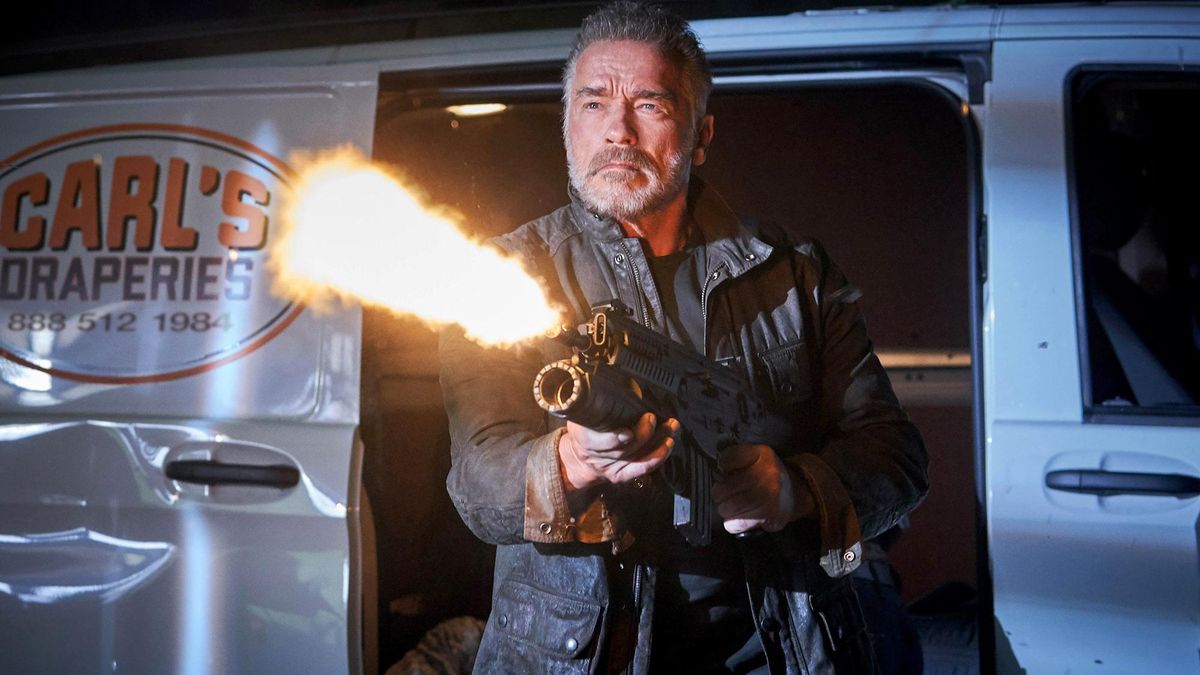Sixth ‘Terminator’ film succeeds by ignoring past three in beloved series

When reviewing a sequel in any long-running franchise – especially one with as much time travel as the “Terminator” movies, which have always trafficked in alternate futures and pasts – there’s a temptation, if not an absolute need, to include a brief recapitulation of where things stand before getting started.
And with “Terminator: Dark Fate,” the satisfyingly solid sixth installment in the sci-fi series about various Terminators (cyborg super assassins from the future), that’s certainly true. The good news is a recap also is a lot easier than it sounds. “Dark Fate” is only a sequel to the first two films, both of which were directed by James Cameron.
Cameron is again involved here, as a producer and story consultant, but he didn’t have anything to do with the third, fourth or fifth films. In other words, you can pretty much ignore all of them, including the ever-shifting date of the so-called Judgment Day event, around which so much of the series pivots.
Director Tim Miller (“Deadpool”) has hit a reset button, and he finds just the right mix of action, suspense and, when needed, old-school comic relief. “Dark Fate” picks up in the present day, more than 20 years after the events of “T2.”
The actions of Sarah Connor (Linda Hamilton) – assisted by a “good” Terminator in the form of Arnold Schwarzenegger in that film – have averted the dystopian future that once loomed: a world of murderous man-hunting machines controlled by a self-aware artificial intelligence called Skynet.
Except for one little thing. In addition to the series of short flashbacks that open the film, we learn, via a new epilogue to “T2,” one frankly shocking piece of information that suddenly changes everything. (This twist has already proved controversial with many “Terminator” fans since the film opened in Europe and parts of Asia.)
Despite the new wrinkle, the plot of the new film closely parallels the plots of the first two and involves the appearance of two rival warriors from the future: one sent to kill a human character (Natalia Reyes) – who, naturally, holds the fate of the world in her hands – and the other to protect her.
Here, the bad guy, played by Gabriel Luna, is a souped-up version of what we’ve seen before: a shape-shifting, liquid-metal automaton called the Rev-9, a Terminator who can split apart into two separate heavies. The first is a flesh-like robot and the second its skeletal innards. The good guy – or gal, in this case – is a bionically augmented human named Grace (Mackenzie Davis of “Tully”).
“Dark Fate” wastes no time getting right down to business. Mere minutes into the film, the two battle bots, as it were, are going at each other. Throughout the movie, some of the CGI special effects are pretty cool, as when Grace slices a housefly neatly in two, in slow motion, with a knife. At other times, some of the Rev-9’s super-speedy movements seem comically – even cartoonishly – exaggerated.
But like sinking into your favorite chair, “Dark Fate” soon settles into its most pleasurable and familiar groove with the arrival of two pivotal characters from the first two films: Sarah, even more badass than her appearance in 1991’s “T2,” and a new, surprisingly domesticated version of Schwarzenegger’s T-800 model Terminator, who is calling himself Carl.
Together, they generate sparks – especially considering how that controversial prologue has altered their already testy working dynamic – and even humor. By way of explaining his vast arsenal of weapons, Carl notes the likelihood of social anarchy even without the catalyst of Doomsday. “Also,” he adds, in an Austrian-accented deadpan, “This is Texas.”
True to its title, there’s a subtext of fatalism to “Dark Fate” that lends the film, however much of it may repeat the first two, a new tone – one that is even more at war between optimism and cynicism. Sarah Connor may have averted one dark version of the future, but another even darker destiny may be inevitable.
Even so, the film suggests, hope – just like the hearts of people who buy tickets to sequels – springs eternal. In this case, it is not misplaced.